Late Neolithic Agriculture in Temperate Europe—A Long-Term Experimental Approach
Abstract
:1. Introduction
2. Material and Methods
2.1. Site and Experimental Design
2.2. Soils
2.3. Agricultural Measures
2.4. Crop Species and Varieties
2.5. Soil Nutrients
3. Results
3.1. Clearing
3.2. Yields
3.2.1. Impacts of Agricultural Measures and Environmental Conditions on Yields
(1) The Influence of Crop Species on Yields
(2) The Influence of Soil Properties on Yields (After Burning)
(3) The Influence of Soil Properties on Yields after Burning or Tillage
(4) A Combination of Burning and Tillage
3.2.2. Possible Processes that Cause the Differences of Yields
(1) The Influence of Burning on pH and Available Nutrients
(2) Origin of the Plant Nutrients
3.3. Implications of the Properties of Slash and Burn Agriculture According to the Current Experimental Results
3.3.1. Permanent Cultivation with Burning?
3.3.2. After the Harvest
3.3.3. A Preliminary Economic Balance
4. Discussion
4.1. Possible Reasons for Slash-and-Burn and Evidence in the Archaeological Record
4.2. Implications of the Forchtenberg Results
4.3. State of Discussion about the Role of Slash-and-Burn
5. Conclusions
Acknowledgments
Author Contributions
Conflicts of Interest
References
- Schier, W. Extensiver Brandfeldbau und die Ausbreitung der neolithischen Wirtschaftsweise in Mitteleuropa und Südskandinavien am Ende des 5. Jahrtausends v. Chr. Prähistorische Zeitschrift 2008, 84, 15–43. [Google Scholar] [CrossRef]
- Bogaard, A. Neolithic Farming in Central Europe, An Archaeobotanical Study of Crop Husbandry Practices; Routledge: London, UK, 2004. [Google Scholar]
- Childe, V.G. The Danube in Prehistory; Clarendon Press: Oxford, UK, 1929. [Google Scholar]
- Boserup, E. The Conditions of Agricultural Growth: The Economics of Agrarian Change under Population Pressure; Allen & Unwin: London, UK, 1965. [Google Scholar]
- Sangmeister, E. Zum Charakter der bandkeramischen Siedlung. Ber RGK 1951, 33, 89–109. [Google Scholar]
- Sangmeister, E. Die ersten Bauern. In Urgeschichte in Baden-Württemberg; Theiss: Stuttgart, Germany, 1983; pp. 429–471. [Google Scholar]
- Soudský, B. The neolithic site of Bylany. Antiquity 1962, 36, 190–200. [Google Scholar] [CrossRef]
- Iversen, J. Landnami Danmarks Steenalter; Danmarks Geologiske Undersøgelse: Kopenhagen, Denmark, 1941. [Google Scholar]
- Iversen, J. The Influence of Prehistoric Man on Vegetation; Danmarks Geologiske Undersøgelse: Kopenhagen, Denmark, 1949. [Google Scholar]
- Smith, R.W. The ecology of Neolithic farming systems as exemplified by the Avebury region. In Proceedings of the Prehistoric Society; Cambridge University Press: Cambridge, UK, 1984; pp. 143–157. [Google Scholar]
- Steensberg, A. An Experiment in Stone Age Agriculture, Burning, Sowing and Harvesting; National Museum of Denmark: Copenhagen, Denmark, 1979. [Google Scholar]
- Rowley-Conwy, P. Slashandburn in the temperate European Neolithic. In Farming Practice in British Prehistory; Edinburgh University Press: Edinburgh, UK, 1981; pp. 85–96. [Google Scholar]
- Rösch, M. Zur Umwelt und Wirtschaft des Jungneolithikums am Bodensee-Botanische Untersuchungen in Bodman-Blissenhalde. Siedlungsarchäologische Untersuchungen im Bodenseeraum. ArchäolNachr Baden 1987, 38, 42–53. [Google Scholar]
- Rösch, M.; Kleinmann, A.; Lechterbeck, J.; Wick, L. Botanical off-site and on-site data as indicators of different land use systems: A discussion with examples from Southwest Germany. Veg. Hist. Archaeobot. 2014, 23, 121–133. [Google Scholar] [CrossRef]
- Rösch, M. Anbauversuche zur (prä) historischen Landwirtschaft im Hohenloher Freilandmuseum Schwäbisch Hall-Wackershofen. In Experimentelle Archäologie in Deutschland; Isensee Verlag: Oldenburg, Germany, 1998; pp. 35–43. [Google Scholar]
- Bauer, U. Die Entwicklung von Anbauverfahren im Ackerbau. In Experimentelle Archäologie in Deutschland, Bilanz 1997; Exar Corporation: Fremont, CA, USA, 1998; pp. 21–33. [Google Scholar]
- Ministerium für Umwelt und Verkehr Baden-Württemberg. WaBoAWasser und Bodenatlas Baden-Württemberg; Ministerium für Umwelt und Verkehr Baden-Württemberg: Stuttgart, Germany, 2007. [Google Scholar]
- Ehrmann, O.; Rösch, M.; Schier, W. Experimentelle Rekonstruktion eines jungneolithischen Wald-Feldbaus mit Feuereinsatz—Ein multidisziplinäres Forschungsprojekt zur Wirtschaftsarchäologie und Landschaftsökologie. Prähistorische Zeitschrift 2009, 84, 44–72. [Google Scholar] [CrossRef]
- FAO. World Reference Base for Soil Resources 2006; FAO: Rome, Italy, 2016. [Google Scholar]
- Herrmann, L. Bodenwissenschaftliche Untersuchungen im Forchtenbergprojekt—Böden, Standorteigenschaften, Nährstoff- und Wasserhaushalt. In Zu den Wurzeln Europäischer Kulturlandschaft-Experimentelle Forschungen; Materialhefte zur Archäologie, 73; Theiss: Stuttgart, Germany, 2005; pp. 83–100. [Google Scholar]
- Schier, W.; Ehrmann, O.; Rösch, M.; Bogenrieder, A.; Hall, M.; Herrmann, L.; Schulz, E. The economics of Neolithic swidden cultivation: Results of an experimental long-term project in Forchtenberg (Baden-Württemberg, Germany). In Economic Archaeology: From Structure to Performance in European Archaeology; UPA: Bonn, Germany, 2013; pp. 97–108. [Google Scholar]
- Mathieu, J.R.; Meyer, D.A. Comparing axe heads of stone, bronze, and steel: Studies in experimental archaeology. J. Field Archaeol. 1997, 24, 333–351. [Google Scholar] [CrossRef]
- Schmithenner, H. Die Reutbergwirtschaft in Deutschland. Geographische Zeitschrift 1923, 29, 115–127. [Google Scholar]
- Schneiter, F. Agrargeschichte der Brandwirtschaft. Forsch Geschichtl Landeskde Steiermark 25; Selbstverlag der historischen Landeskommission für die Steiermark: Graz, Austria, 1970. [Google Scholar]
- Hafner, F. Mehrfachnutzung des Waldes. In Österreichs Wald-Vom Urwald zur Waldwirtschaft. Österreichischer Forstverein; Eigenverlag: Vienna, Austria, 1994; pp. 108–128. [Google Scholar]
- Ehrmann, O.; Rösch, M. Experimente zum neolithischen Wald-Feldbau in Forchtenberg: Einsatz und Auswirkungen des Feuers, Erträge und Probleme des Getreideanbaus. In Zu den Wurzeln Europäischer Kulturlandschaft-Experimentelle Forschungen; Materialhefte zur Archäologie, 73; Theiss: Stuttgart, Germany, 2005; pp. 109–140. [Google Scholar]
- Aufhammer, G.; Simon, U. Die Samen landwirtschaftlicher Kulturpflanzen im Grundstein des ehemaligen Nürnberger Stadttheaters und ihre Keimfähigkeit. Zeitschrift f Acker- und Pflanzenbau 1957, 103, 454–472. [Google Scholar]
- Blume, H.P.; Deller, B.; Furtmann, K.; Leschber, R.; Paetz, A.; Wilke, B.M. Handbuch der Bodenuntersuchung; Beuth&Wiley-VCH: Weinheim, Germany, 2013. [Google Scholar]
- Ehrmann, O.; Biester, H.; Bogenrieder, A.; Rösch, M. Fifteen years of the Forchtenberg experiment—Results and implications for the understanding of Neolithic land use. Veg. Hist. Archaeobot. 2014, 23, 5–18. [Google Scholar] [CrossRef]
- KTBL. Faustzahlen für die Landwirtschaft. 14; Auflage: Darmstadt, Germany, 2009. [Google Scholar]
- Glaser, B.; Guggenberger, G.; Zech, W. Organic Chemistry studies on Amazonian dark earths. In Amazonian Dark Earths; Lehmann, J., Kern, D.C., Glaser, B., Woods, W.I., Eds.; Springer: Dordrecht, The Netherlands, 2003; pp. 227–241. [Google Scholar]
- Herrmann, L.; Ehrmann, O.; Stein, C.; Wermbter, N.; Schulz, E.; Rösch, M.; Hall, M.; Bogenrieder, A.; Page, H.; Schier, W. The Forchtenberg Project—An Interdisciplinary experimental approach towards Neolithic Agriculture. Atti. Soc. Tosc. Sci. Nat. Mem. 2007, 112, 127–132. [Google Scholar]
- Jacomet, S. Subsistenz und Landnutzung während des 3. Jahrtausends v. Chr. aufgrund von archäobotanischen Daten aus dem südwestlichen Mitteleuropa. In Umwelt Wirtschaft Siedlungen im Dritten Vorchristlichen Jahrtausend Mitteleuropas und Südskandinaviens; Wachholtz: Neumünster, Germany, 2008; pp. 355–378. [Google Scholar]
- Rösch, M.; Ehrmann, O.; Kury, B.; Bogenrieder, A.; Herrmann, L.; Schier, W. Spätneolithische Landnutzung im nördlichen Alpenvorland: Beobachtungen Hypothesen Experimente. In Umwelt Wirtschaft Siedlungen im Dritten Vorchristlichen Jahrtausend Mitteleuropas und Südskandinaviens; Wachholtz: Neumünster, Germany, 2008; pp. 301–315. [Google Scholar]
- Schulz, E.; Vannina, U.; Hall, M. The double mosaic-regeneration of vegetation and soil after clearing, burning, and cultivation: Lessons from the Forchtenberg experiment. Veg. His. Archaeobot. 2014, 23, 19–36. [Google Scholar] [CrossRef]
- Eckmeier, E.; Rösch, M.; Ehrmann, O.; Schmidt, M.W.; Schier, W.; Gerlach, R. Conversion of biomass to charcoal and the carbon mass balance from a slash-and-burn experiment in a temperate deciduous forest. Holocene 2007, 17, 539–542. [Google Scholar] [CrossRef]
- Mürle, R. Charakterisierung Organischer Bodensubstanz Entlang eines Klimagradienten Anhand Thermischer (Dsc-Tg) und Spektraler (Mirs-Drift) Methoden. Master’s Thesis, University of Hohenheim, Stuttgart, Germany, 2013. [Google Scholar]
- Menke, B. Vegetations- und Bodenentwicklung im Bereich der celticfields im Gehege Ausselbek bei Ülsby, Kreis Schleswig-Flensburg. Offa 1995, 52, 7–28. [Google Scholar]
- Kirleis, W.; Fischer, E. Neolithic cultivation of tetraploid free threshing wheat in Denmark and Northern Germany: Implications for crop diversity and social dynamics of the Funnel beaker Culture. Veg. Hist. Archaeobot. 2014, 23, 81–96. [Google Scholar] [CrossRef]
- Wilmanns, O.; Schwabe-Braun, A.; Emter, M. Struktur und Dynamik der Pflanzengesellschaften im Reutwaldgebiet des Mittleren Schwarzwaldes. Doc. Phytosociol. 1979, 4, 983–1024. [Google Scholar]
- Pott, R. Vegetationsgeschichtliche und pflanzensoziologische Untersuchungen zur Niederwaldwirtschaft in Westfalen; Westfälisches Museum für Naturkunde: Münster, Germany, 1995. [Google Scholar]
- Nolte, H.H. Geschichte Russlands; Reclam: Stuttgart, Germany, 1998. [Google Scholar]
- Jääts, L.; Konsa, M.; Kihno, K.; Tomson, P. Fire Cultivation in Estonian Cultural Landscapes. In The Space of Culture-the Place of Nature in Estonia and Beyond; Tartu University Press: Tartu, Estonia, 2011; pp. 164–180. [Google Scholar]
- Kreuz, A.; Märkle, T.; Marinova, E.; Rösch, M.; Schäfer, E.; Schamuhn, S.; Zerl, T. The Late Neolithic Michelsbergculture-just ramparts and ditches? A supraregional comparison of agricultural and environmental data. Praehistorische Zeitschrift 2014, 89, 72–115. [Google Scholar] [CrossRef]
- Maier, U. Untersuchungen in der neolithischen Ufersiedlung Hornstaad-Hörnle IA am Bodensee. Forschungen und Berichte zur Vor-und Frühgeschichte in Baden-Württemberg 2001, 74, 9–384. [Google Scholar]
- Jacomet, S.; Ebersbach, R.; Akeret, O.; Antolin, F.; Baum, T.; Bogaard, A.; Brombacher, C.; Bleicher, N.K.; Heitz-Weniger, A.; Hüster-Plogmann, H.; et al. On-site data cast doubts on the hypothesis of shifting cultivation in the late Neolithic (c. 4300–2400 cal. BC): Landscape management as an alternative paradigm. Holocene 2016, 26, 1858–1874. [Google Scholar] [CrossRef]
- Baum, T.G. Models of wetland settlement and associated land use in South-West Germany during the fourth millennium BC. Veg. Hist.Archaeobot. 2014, 3, 67–80. [Google Scholar] [CrossRef]
- Baum, T.; Nendel, C.; Jacomet, S.; Colobran, M.; Ebersbach, R. “Slash and burn” or “weed and manure”? A modelling approach to explore hypotheses of late Neolithic crop cultivation in pre-alpine wetland sites. Veg. Hist. Archaeobot. 2016, 25, 611–627. [Google Scholar] [CrossRef]
- Reynolds, P. Deadstock and livestock. In Farming Practice in British Prehistory; Edinburgh University Press: Edinburgh, UK, 1984; pp. 97–122. [Google Scholar]
- Styring, A.; Maier, U.; Stephan, E.; Schlichtherle, H.; Bogaard, A. Cultivation of choice: New insights into farming practices at Neolithic lakeshore sites. Antiquity 2016, 90, 95–110. [Google Scholar] [CrossRef]
- Bogaard, A.; Fraser, R.; Heaton, T.H.E.; Wallace, M.; Vaiglova, P.; Charles, M.; Jones, G.; Evershed, R.P.; Styring, A.K.; et al. Crop manuring and intensive land management by Europe’s first farmers. Proc. Natl. Acad. Sci. USA 2013, 110, 12589–12594. [Google Scholar] [CrossRef] [PubMed] [Green Version]
- Bogaard, A.; Hodgson, J.; Nitsch, E.; Jones, G.; Styring, A.; Diffey, C.; Tugay, O. Combining functional weed ecology and crop stable isotope ratios to identify cultivation intensity: A comparison of cereal production regimes in Haute Provence, France and Asturias, Spain. Veg. Hist. Archaeobot. 2016, 25, 57–73. [Google Scholar] [CrossRef] [PubMed]
- Fraser, R.A.; Bogaard, A.; Heaton, T.; Charles, M.; Jones, G.; Christensen, B.T.; Styring, A.K. Manuring and stable nitrogen isotope ratios in cereals and pulses: Towards a new archaeobotanical approach to the inference of land use and dietary practices. J. Archaeol. Sci. 2011, 38, 2790–2804. [Google Scholar] [CrossRef] [Green Version]
- Scott, A.C.; Bowman, D.M.; Bond, W.J.; Pyne, S.J.; Alexander, M.E. Fire on Earth: An Introduction; John Wiley & Sons: Hoboken, NJ, USA, 2013. [Google Scholar]
- Rösch, M. Agrarkrisen in der Vergangenheit: Ursachen, Verlauf, Bewältigung. Erklärungsversuche aus botanischer Sicht. In Strategien zum Überleben, Umweltkrisen und Ihre Bewältigung; RGZM-Tagungen 11: Mainz, Germany, 2011; pp. 81–94. [Google Scholar]
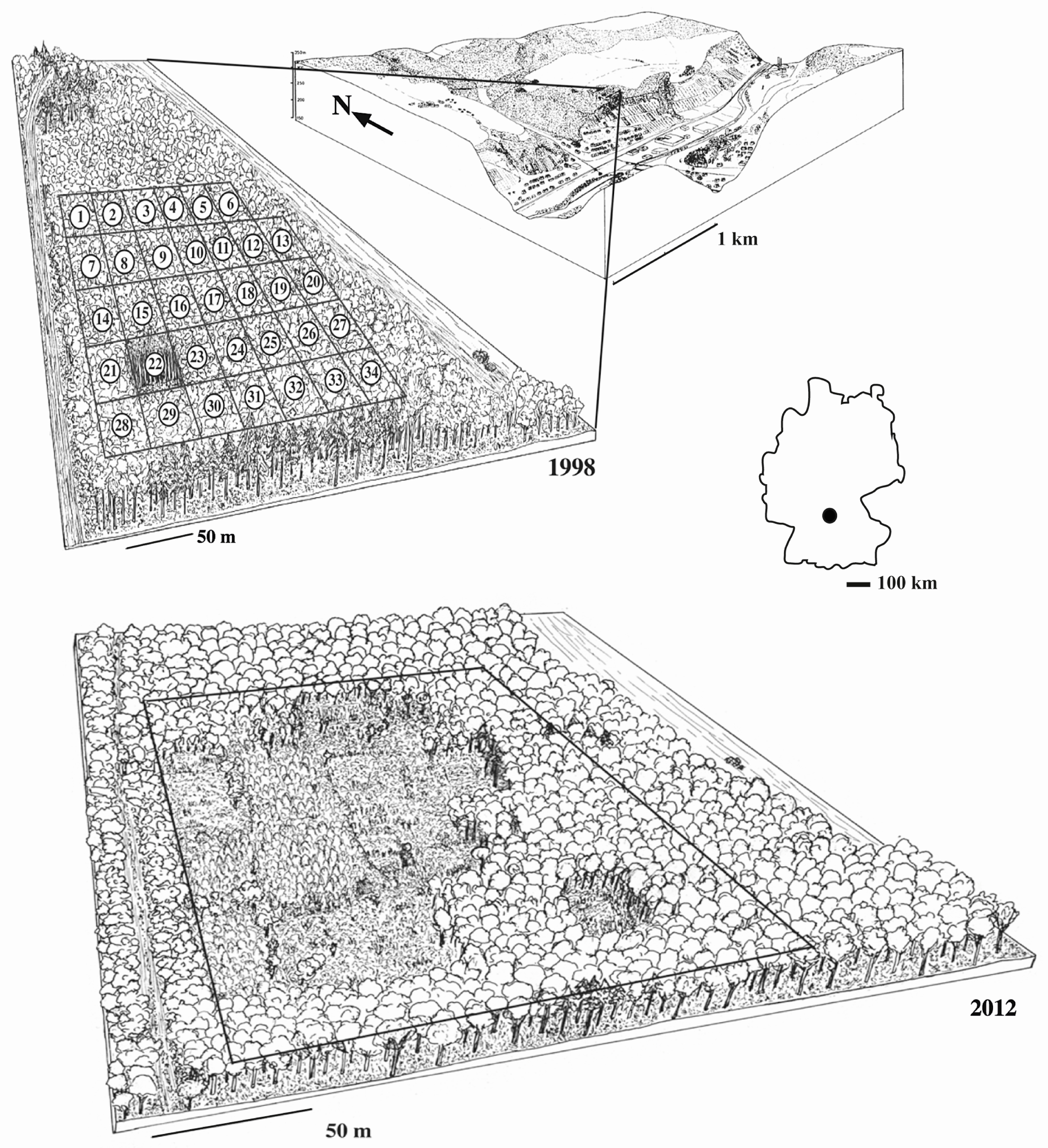
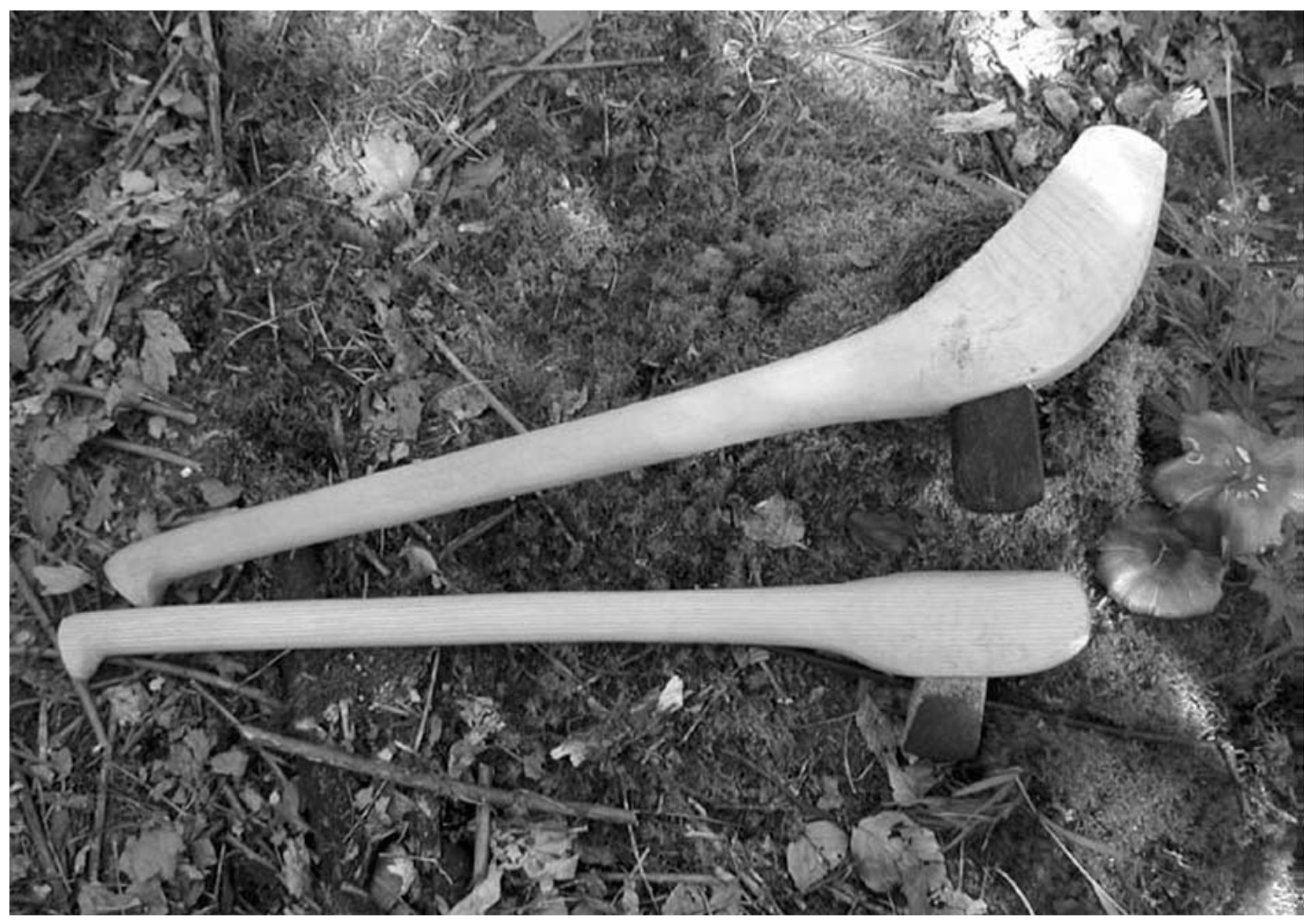
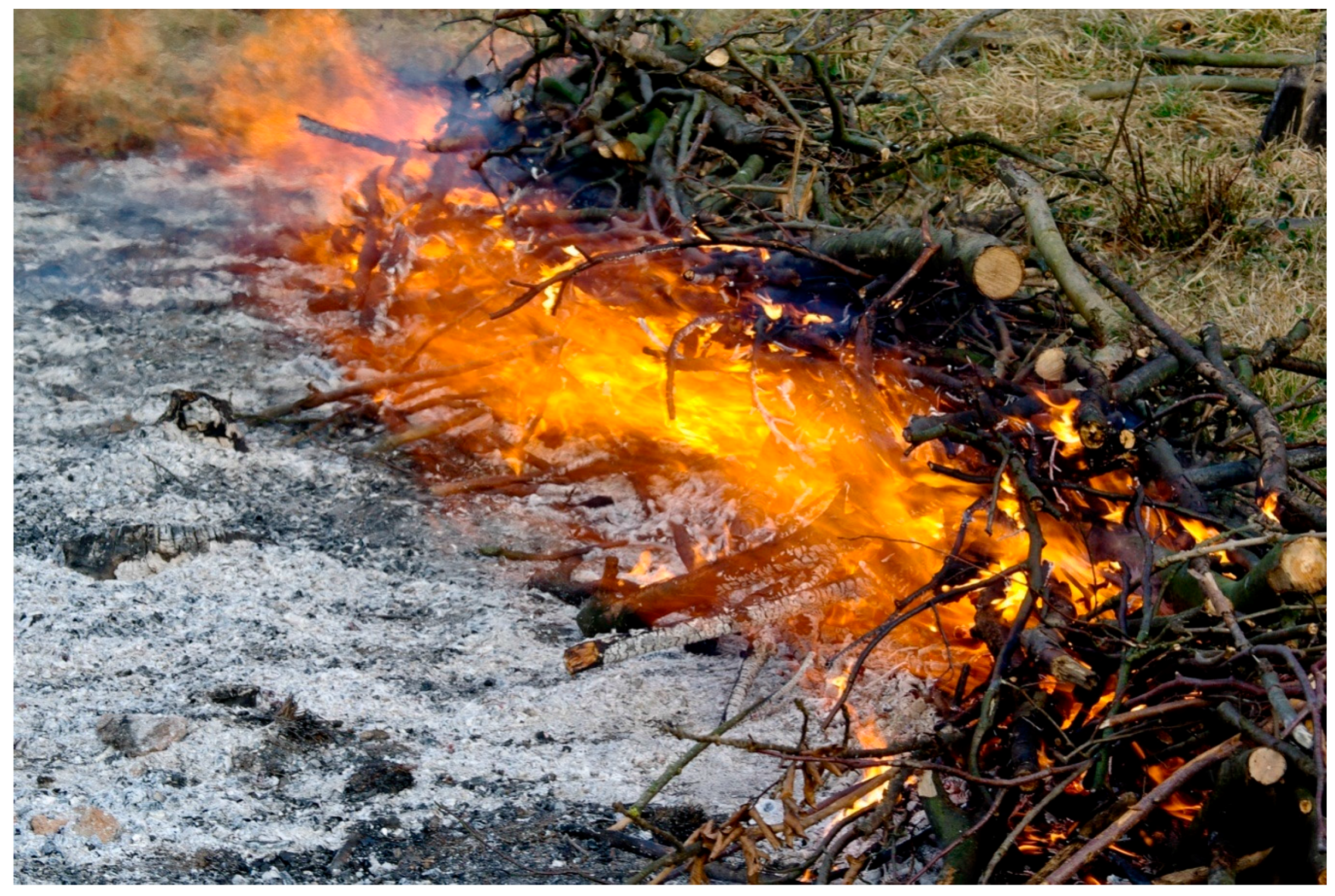
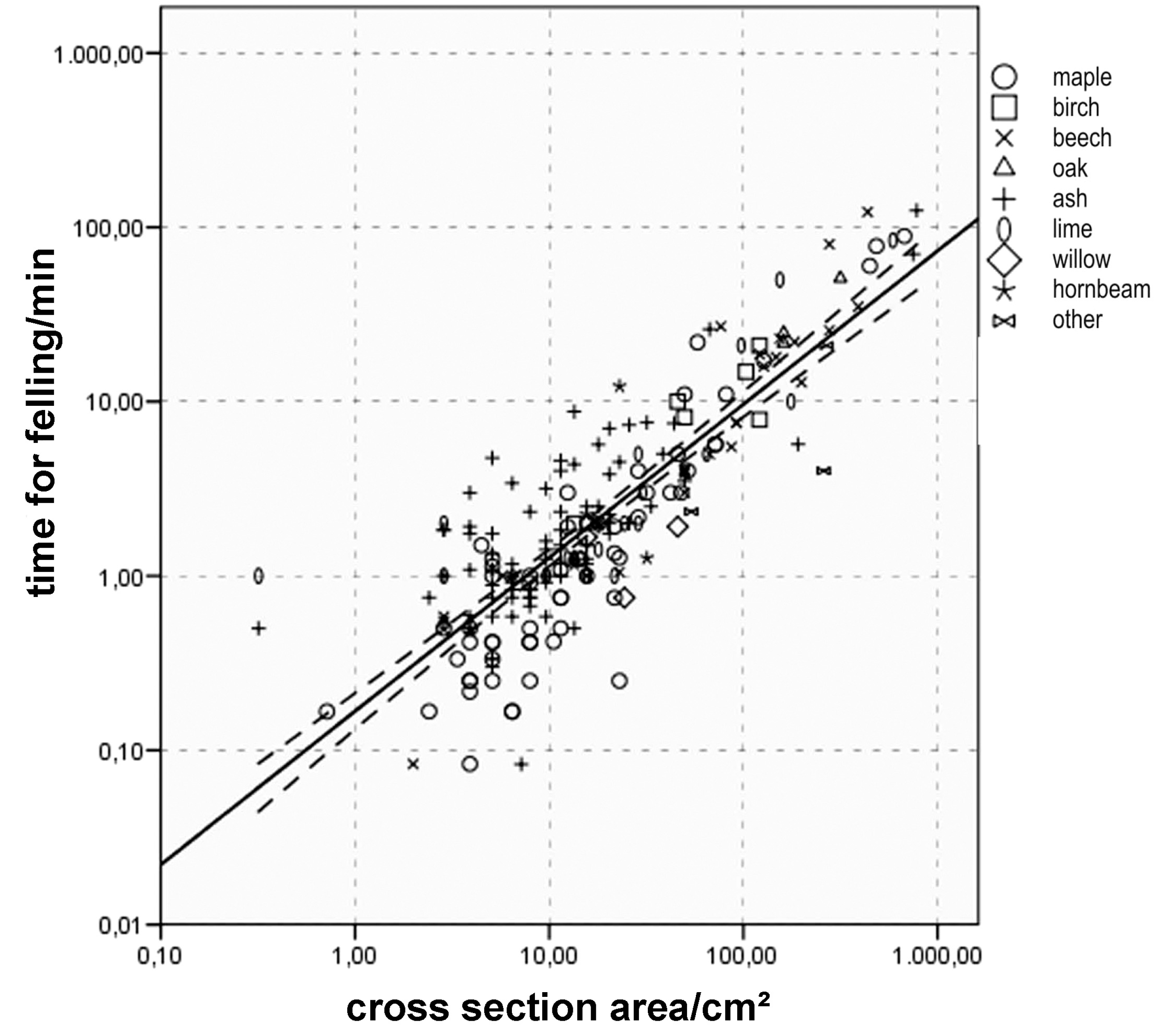
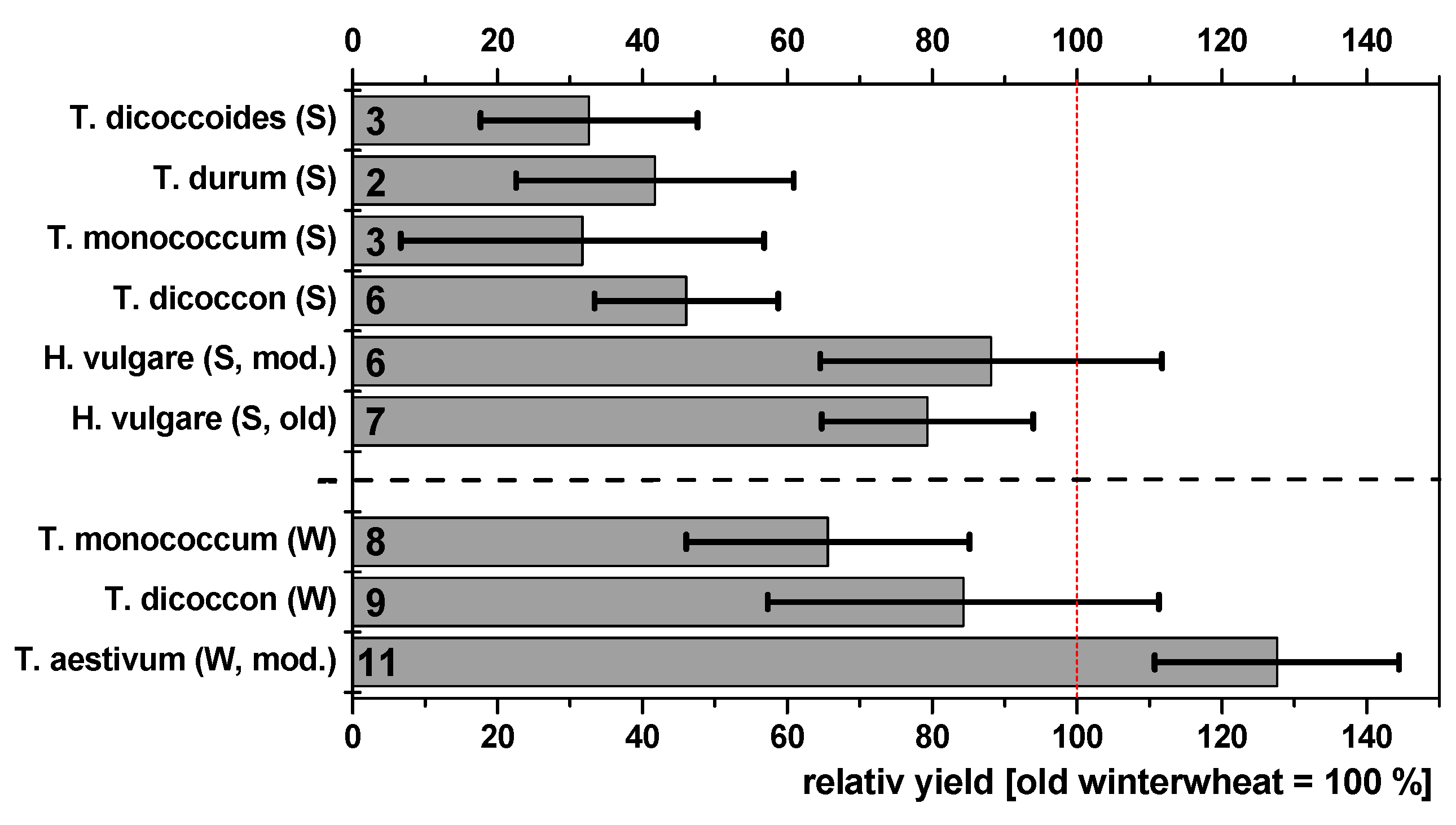

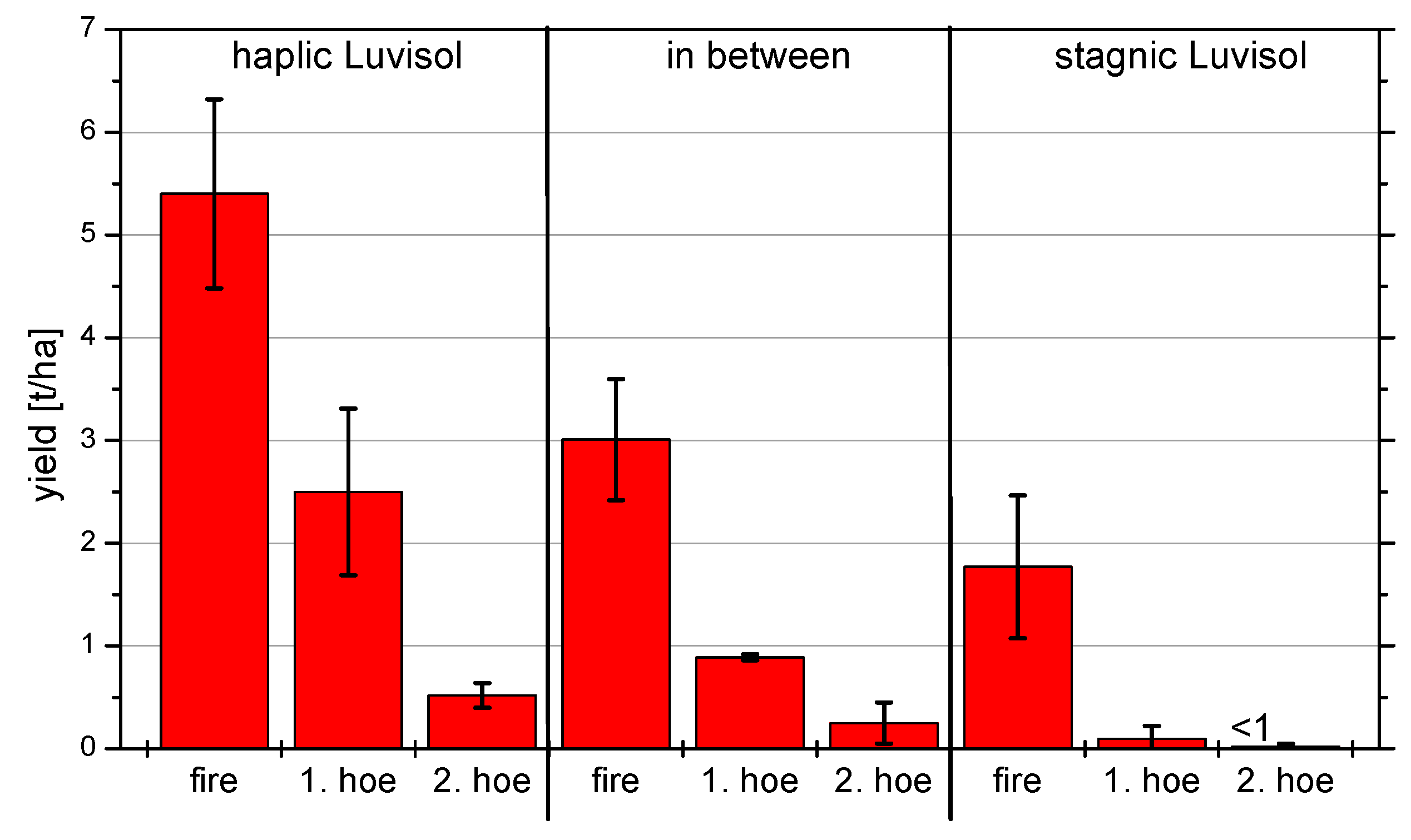
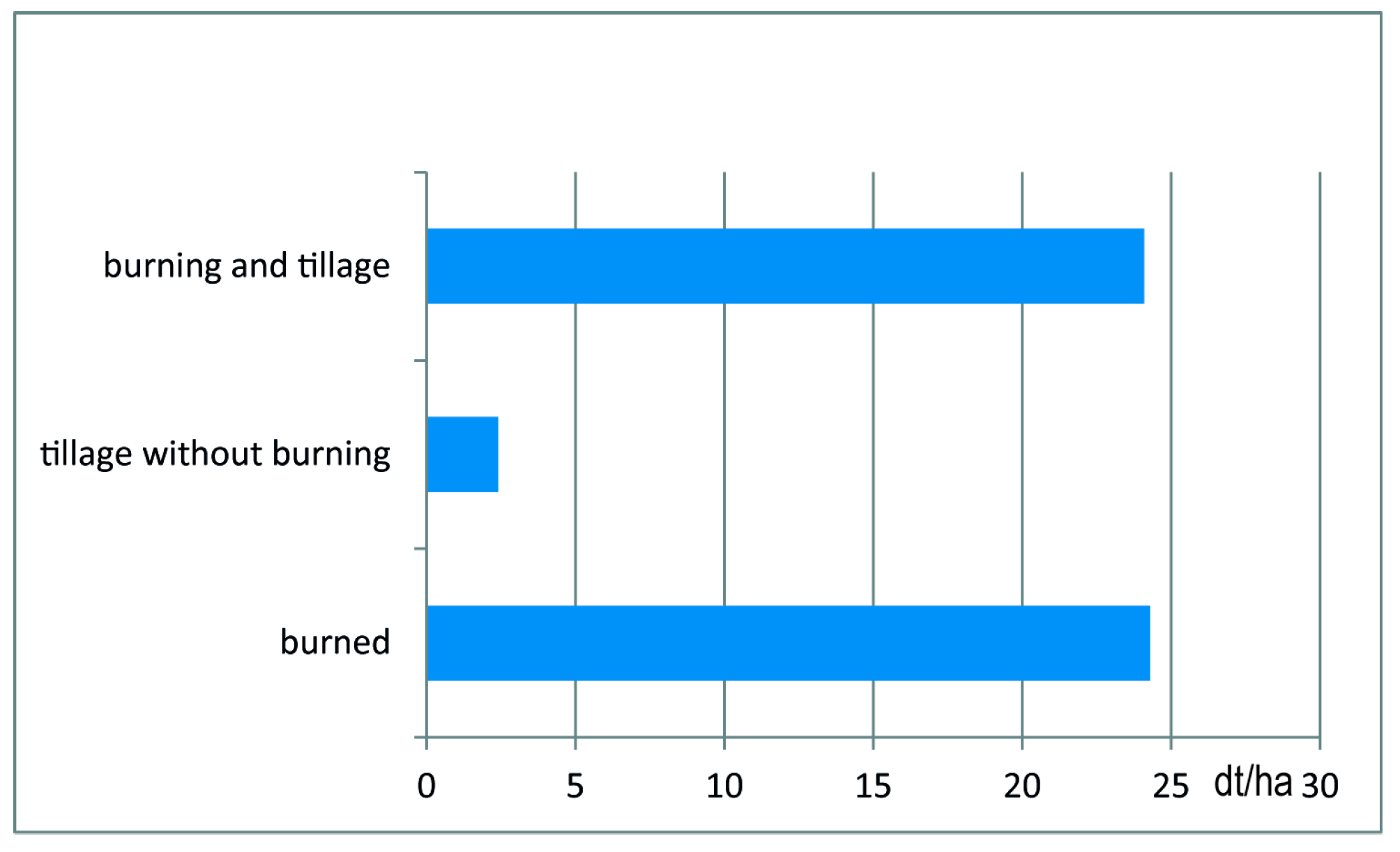
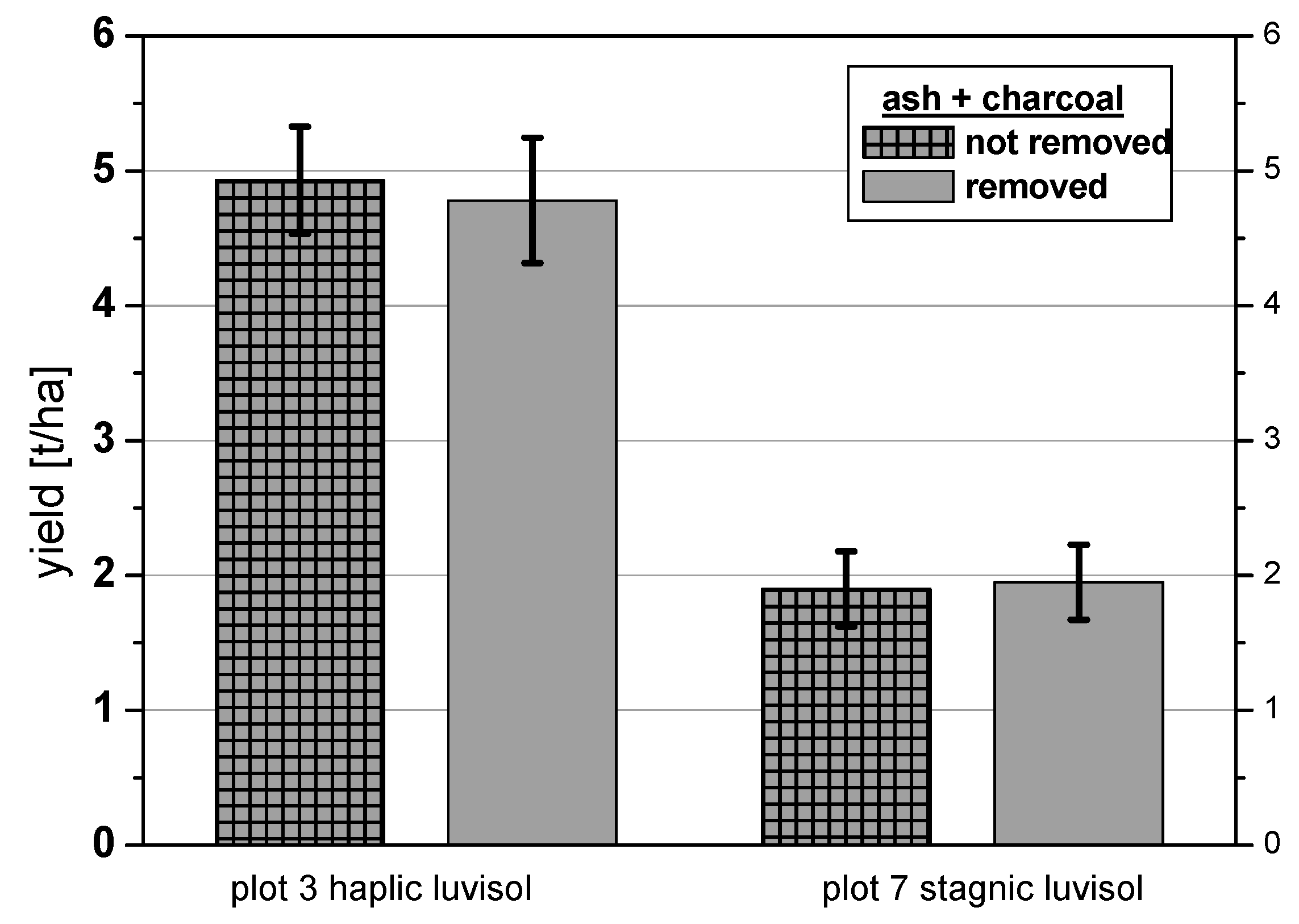
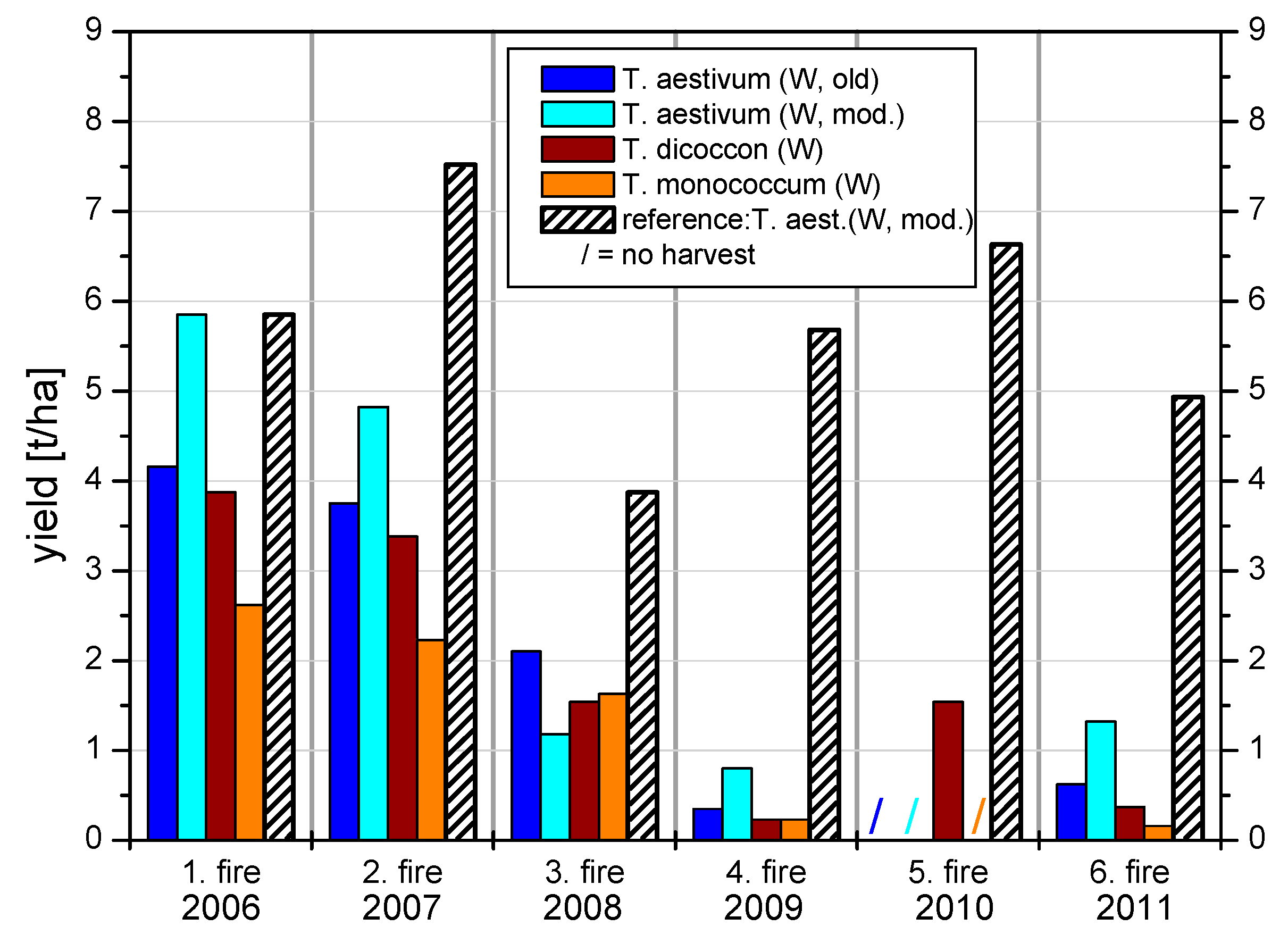
© 2017 by the authors. Licensee MDPI, Basel, Switzerland. This article is an open access article distributed under the terms and conditions of the Creative Commons Attribution (CC BY) license ( http://creativecommons.org/licenses/by/4.0/).
Share and Cite
Rösch, M.; Biester, H.; Bogenrieder, A.; Eckmeier, E.; Ehrmann, O.; Gerlach, R.; Hall, M.; Hartkopf-Fröder, C.; Herrmann, L.; Kury, B.; et al. Late Neolithic Agriculture in Temperate Europe—A Long-Term Experimental Approach. Land 2017, 6, 11. https://doi.org/10.3390/land6010011
Rösch M, Biester H, Bogenrieder A, Eckmeier E, Ehrmann O, Gerlach R, Hall M, Hartkopf-Fröder C, Herrmann L, Kury B, et al. Late Neolithic Agriculture in Temperate Europe—A Long-Term Experimental Approach. Land. 2017; 6(1):11. https://doi.org/10.3390/land6010011
Chicago/Turabian StyleRösch, Manfred, Harald Biester, Arno Bogenrieder, Eileen Eckmeier, Otto Ehrmann, Renate Gerlach, Mathias Hall, Christoph Hartkopf-Fröder, Ludger Herrmann, Birgit Kury, and et al. 2017. "Late Neolithic Agriculture in Temperate Europe—A Long-Term Experimental Approach" Land 6, no. 1: 11. https://doi.org/10.3390/land6010011





